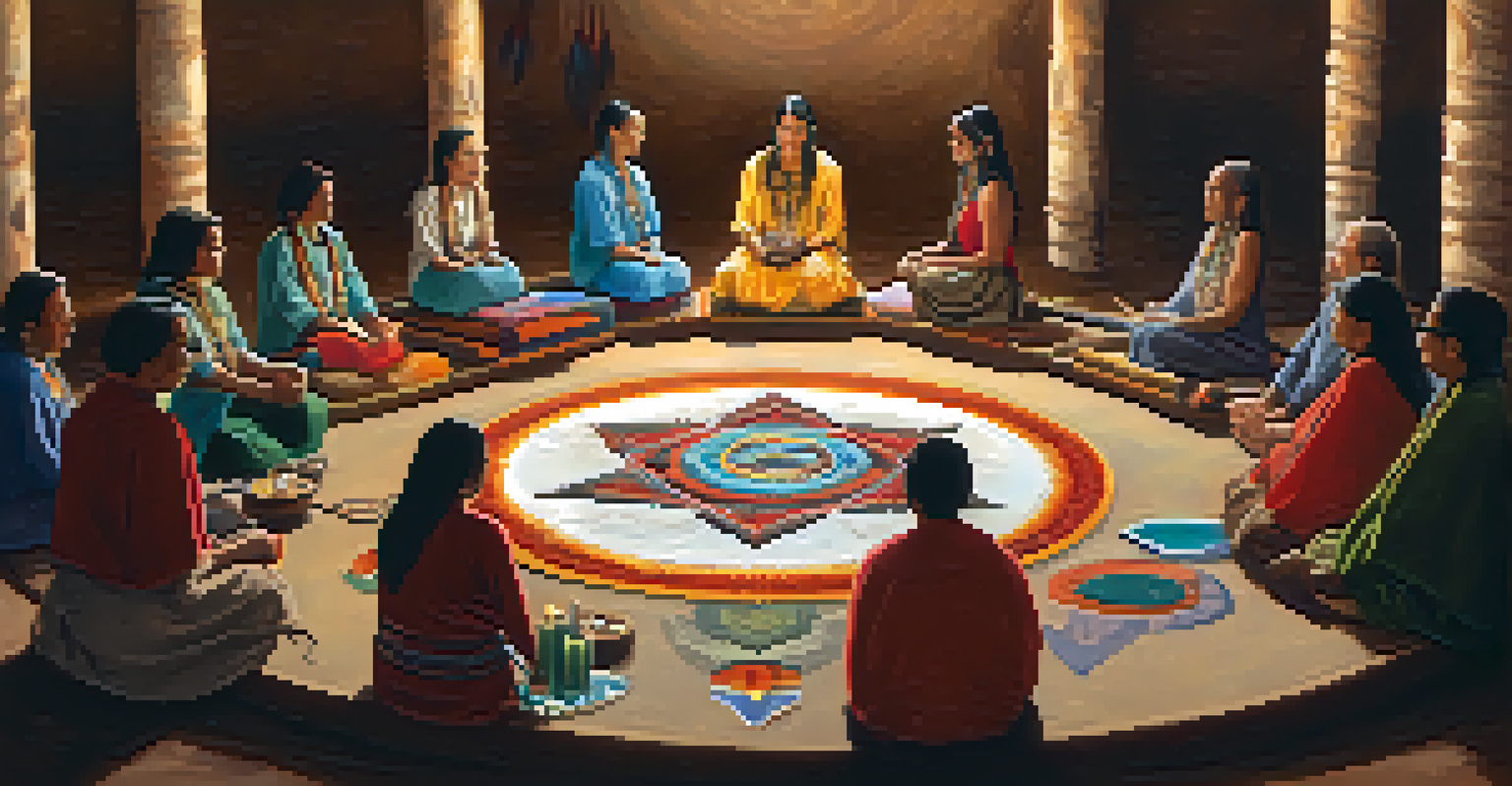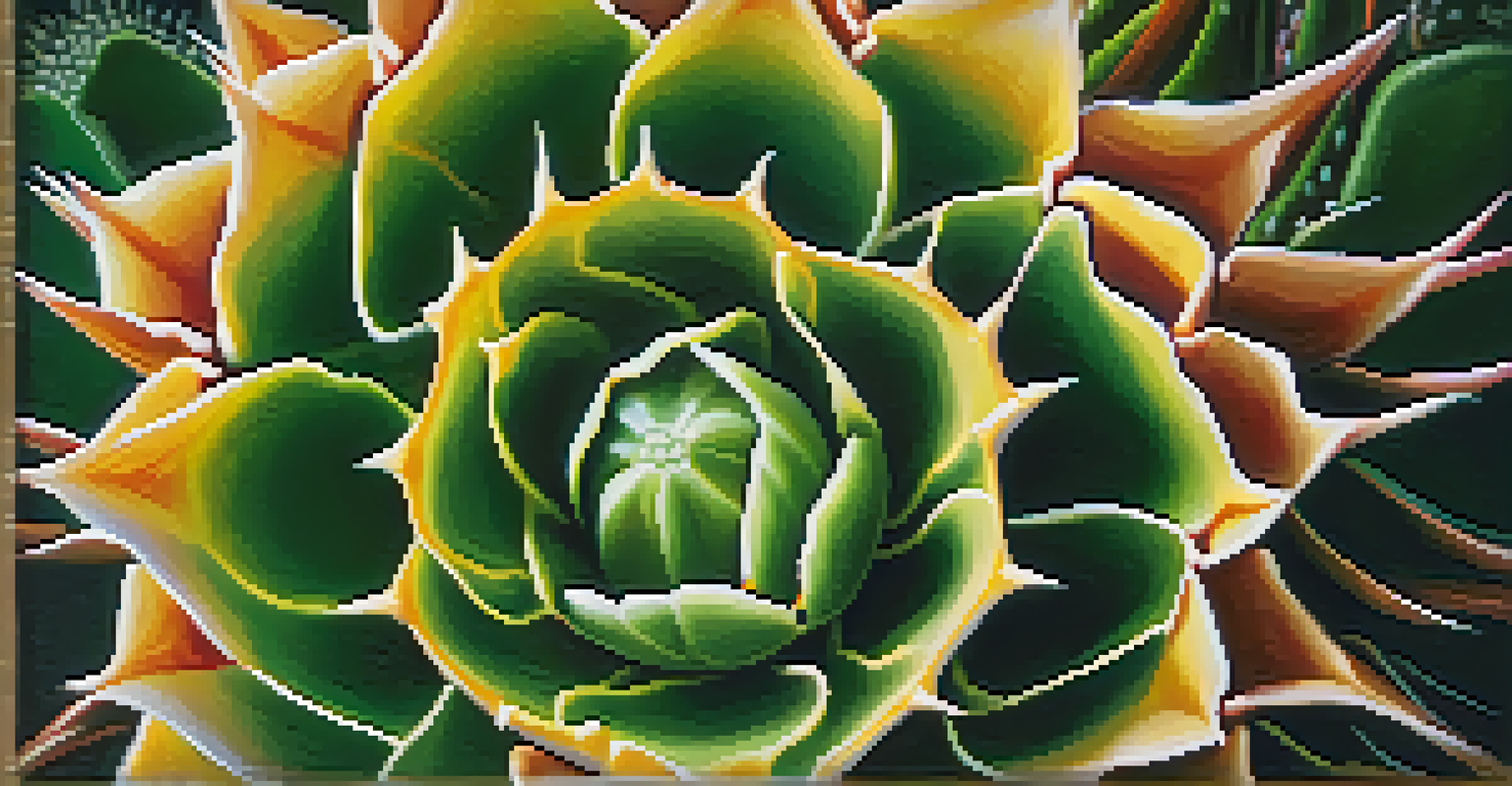Peyote Healing Ceremonies: Sacred Practices and Beliefs

Understanding Peyote: A Sacred Plant in Healing
Peyote, a small cactus native to Mexico and the southwestern United States, is revered for its psychoactive properties. Traditionally used by Indigenous peoples, this plant plays a vital role in spiritual and healing ceremonies. The active compound, mescaline, induces altered states of consciousness, allowing participants to connect deeply with themselves and the spiritual world.
The use of Peyote in healing ceremonies is a bridge between the physical and spiritual realms, offering profound insights and connections.
The significance of Peyote is not merely in its chemical effects; it carries a rich history tied to cultural practices and beliefs. For many Native American tribes, Peyote is considered a gift from the Creator, embodying a bridge between the physical and spiritual realms. This deep respect shapes the way it is used in healing ceremonies.
In these ceremonies, Peyote is consumed in a controlled and sacred environment, often accompanied by songs, prayers, and rituals. This intentional setting enhances the healing experience, fostering a sense of community and shared purpose among participants.
The Role of Rituals in Peyote Healing Ceremonies
Rituals are the backbone of Peyote healing ceremonies, providing structure and meaning to the experience. These rituals often include the creation of a sacred space, which is adorned with meaningful symbols and items that invoke protection and guidance. This environment helps participants feel safe to explore their inner landscapes.

Songs and prayers, integral to the ceremonies, serve as a way to communicate with the spirit world. They express gratitude, seek healing, and invite clarity, helping participants navigate their journeys. The rhythmic chanting and drumming can also create a communal bond, enhancing the collective experience.
Peyote's Role in Healing Ceremonies
Peyote is revered in Indigenous cultures for its psychoactive properties that facilitate deep spiritual connections and healing.
Moreover, rituals often involve storytelling, where elders share wisdom and experiences related to Peyote and its teachings. This exchange not only preserves cultural heritage but also reinforces the importance of community support in the healing process.
The Psychological and Emotional Benefits of Peyote
Participants in Peyote healing ceremonies often report profound psychological and emotional benefits. The altered states of consciousness can lead to increased self-awareness, allowing individuals to confront and process deep-seated fears or traumas. This therapeutic aspect is a key reason why many seek out these experiences.
Psychedelics hold the potential to unlock new pathways to healing, blending ancient wisdom with modern science.
Additionally, the communal aspect of the ceremonies fosters a sense of belonging and support. Participants share their insights and feelings, which can enhance emotional healing and reduce feelings of isolation. This shared vulnerability creates a safe space for personal growth and transformation.
Many individuals also find clarity regarding their life paths and decisions during these ceremonies. The introspection facilitated by Peyote can illuminate new perspectives, helping participants to make more informed choices in their lives.
Cultural Significance of Peyote in Indigenous Communities
In Indigenous cultures, Peyote is more than just a plant; it is a symbol of identity, spirituality, and resilience. Its use in healing ceremonies is deeply rooted in traditions that have been passed down through generations. This connection to heritage reinforces the cultural significance of Peyote, making it a powerful element in maintaining Indigenous identities.
The ceremonies are often conducted by trained leaders, known as ‘roadmen,’ who guide participants through the experience. These leaders hold significant cultural knowledge and are respected figures within their communities. Their role ensures that the traditions surrounding Peyote are honored and preserved.
Cultural Significance and Identity
For Indigenous communities, Peyote symbolizes identity, spirituality, and resilience, deeply rooted in their cultural traditions.
Furthermore, the revival and recognition of Peyote ceremonies in contemporary society highlight the importance of Indigenous rights and sovereignty. As more people seek authentic healing experiences, the cultural narratives surrounding Peyote gain visibility, promoting respect and understanding.
Challenges and Controversies Surrounding Peyote Use
Despite its profound significance, the use of Peyote is not without challenges and controversies. Overharvesting and habitat loss threaten the cactus's survival, raising concerns about sustainability. As interest in Peyote grows, it becomes crucial to balance cultural practices with ecological preservation.
Legal issues also play a role in the discussion around Peyote. While certain Indigenous groups have the legal right to use Peyote in their ceremonies, there is ongoing debate about its status in broader society. This has led to a complex landscape where cultural practices can clash with legal frameworks.
Moreover, as non-Indigenous individuals participate in these ceremonies, there is a growing concern about cultural appropriation. It is essential to approach Peyote healing with respect and understanding, acknowledging the cultural roots and significance it holds for Indigenous peoples.
Peyote and Modern Medicine: A New Frontier?
The growing interest in psychedelics for therapeutic purposes has led to renewed attention on Peyote and its potential benefits. Research into the psychological effects of mescaline is expanding, suggesting that it may aid in treating conditions like PTSD, depression, and anxiety. This scientific exploration opens the door to new possibilities in mental health care.
As more studies emerge, there is hope that the findings will validate traditional practices and integrate them into modern therapeutic frameworks. The blending of ancient wisdom with contemporary science could create holistic approaches to healing that benefit a wider audience.
Challenges to Peyote Sustainability
The increasing interest in Peyote poses challenges such as overharvesting and cultural appropriation, necessitating respectful practices.
However, it is vital to approach this integration thoughtfully. Respecting the cultural significance of Peyote while exploring its therapeutic potential requires careful navigation to ensure that Indigenous voices are heard and honored in the conversation.
The Future of Peyote Healing Ceremonies
Looking ahead, the future of Peyote healing ceremonies is a topic of much discussion and anticipation. With the increasing interest in alternative healing practices, there is potential for broader acceptance and understanding of these sacred rituals. However, this must be balanced with a commitment to respecting Indigenous traditions.
Education plays a crucial role in shaping perceptions about Peyote. By sharing knowledge about its cultural significance and the importance of sustainable practices, more people can appreciate the depth of these ceremonies. This awareness can foster respect and protect the sacredness of the practice.

Ultimately, the future will depend on collaboration and dialogue between Indigenous communities and those interested in Peyote's healing properties. By working together, we can ensure that the legacy of Peyote healing ceremonies continues to thrive for generations to come.